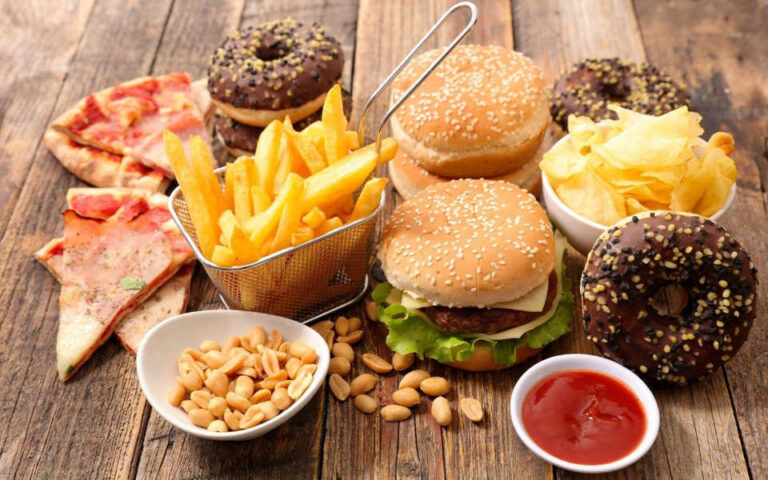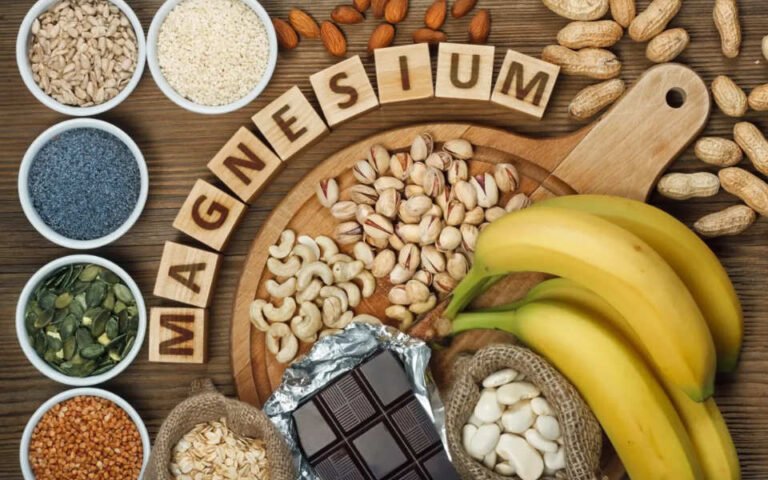Almost everyone loves chocolate. They’re delicious and chock full of healthy plant compounds and antioxidants to boot. However, not all chocolates are made equally, some of them may contain too much sugar while others are heavily processed. Fortunately, there are chocolates that are made out of the minimally-processed raw cacao which gives us more reasons to love this tasty treat.
Cacao vs Cocoa
Before anything else let’s clear things up first, cacao and cocoa are not the same. However, only a fine line differentiates cacao and cocoa. Both of them come from the cacao fruit. This fruit is filled with cacao beans. These beans that are taken directly from the fruit have a white-fleshy casing. This white casing has a flavourful and fruity taste. Traditionally, people would suck the white casing dry and spit out the beans but now producers choose to ferment the white casing. After fermentation, the cacao beans are then sundried. Once the beans are dry, the outer shell is removed and the crumbly cacao nibs are what’s left. What you do with the cacao nibs is what differentiates cacao vs cocoa. If you grind the cacao nibs, you’ll get cacao powder. It is possible to make chocolate from cacao by using a stone grinder. However, if you roast the cacao nibs, you’ll get cocoa powder. It is also possible to make chocolate from cocoa powder just by adding some oils like coconut oil.
Knowing that cacao was not exposed to heat, it is superior to cocoa in the sense that beneficial plant compounds that are sensitive to heat would remain intact. Nevertheless, cocoa still packs a lot of plant compounds but not as much as raw cacao.
Raw Cacao
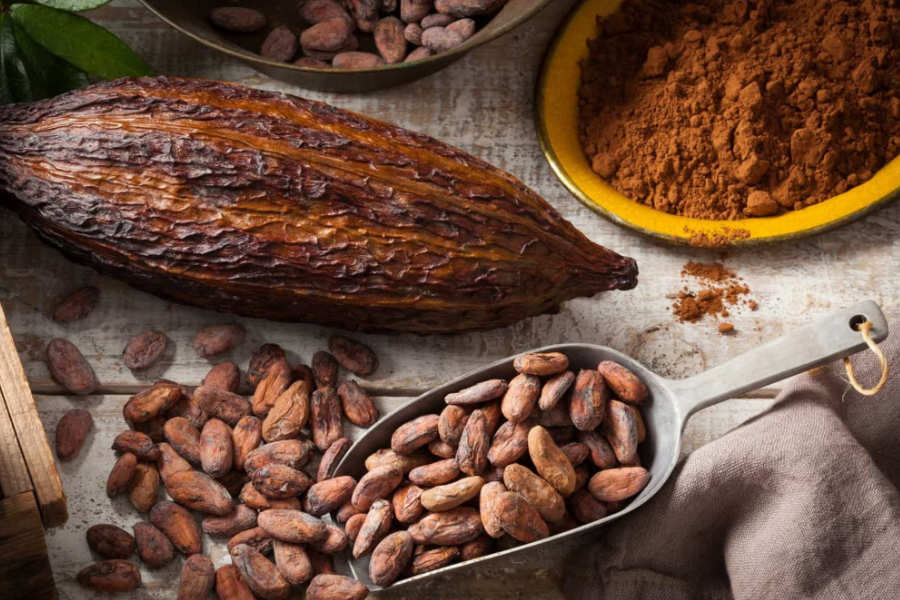
There is some confusion when people use the term ‘raw cacao’. It could mean cacao beans that were taken directly from the cacao fruit; the one with the white-fleshy casing. It could also mean fermented cacao beans that were not roasted. To clear things up, when people say raw cacao it is always the latter.
Raw cacao is often labelled ‘unprocessed’. This is a misnomer. Both raw cacao and cocoa underwent a fermentation process. So saying that raw cacao is unprocessed is not accurate. What most manufacturers mean when they slap on the ‘unprocessed’ label, is that the raw cacao beans were not roasted, roasted below 118°F or 48°C, or ground, pressed or milled while keeping the temperature low. Again, this is to ensure that the beneficial plant compounds that are heat sensitive wouldn’t be destroyed.
Cacao harvesting and processing
The cacao fruit is first grown and harvested. Ripe cacao fruits are opened and their beans are removed. At this point, the beans are still white and fleshy. They are then fermented in a wooden box and covered with banana leaves. Once the fermentation is finished, they are sun-dried. Once the seeds are dry enough, about 7% moisture remaining, they are aged for 30 days in a dry room. This dry room must not have humidity that is higher than 8%. After the ageing process, they are ready to be sold.
Health Benefits of Cacao

Flavanols are the main reason as to why cacao is considered a superfood. These plant compounds can act as powerful antioxidants and offer a wide range of health benefits such as blood pressure regulation, improved cognitive functioning, improved cardiovascular health, and improved energy levels. But aside from the flavanols, cacao contains several other plant compounds that provide similar or different health benefits.
1. Mood
Studies have shown that cacao has the ability to convert the amino acid tryptophan into the mood-boosting hormone serotonin. Furthermore, cocoa contains its own mood-boosting plant compounds. With these two features combined, researchers theorized that it may be possible to use cacao as a natural food-based treatment for mood disorders such as depression. In 2008, researchers tested this hypothesis on several elderly men. Results of this study showed that those participants who were given cacao had better overall psychological health compared to those who were not given cacao. Further back in 2004, researchers evaluated cacao’s effect on a pregnant mother’s maternal stress and the temperament of their infant. Results of this study showed that those mothers who received cacao managed maternal stress better. Additionally, babies born from those mothers who received cacao exhibited better temperament. All of these points to the fact that cacao can improve mood and decrease the likelihood of developing mood disorders.
2. Cardiovascular health
There are several cardiovascular health benefits of cacao. For starters, the high amount of flavanols that it possesses is scientifically proven to be capable of maintaining blood vessel elasticity which in turn improves blood flow. Aside from this, cacao’s high levels of polyphenols are also capable of improving cardiovascular health by improving the functioning of the cells present within the blood vessel walls. Furthermore, a 2011 meta-analysis of clinical trials which tried to link cacao consumption and Low-Density Lipoprotein or LDL levels showed that cacao can, in fact, reduce ‘the bad cholesterol’ LDL significantly.
a) Blood pressure
Since cacao can improve blood circulation and decrease the amount of the plaque-forming LDL, it is only logical to conclude that it may lower blood pressure as well. Most studies agree with this notion. A systematic review which was conducted last 2010 concluded that dark chocolate significantly reduced systolic hypertension or diastolic prehypertension of their participants. Further back in 2007, a randomized controlled 14-day trial which tested chocolate’s blood-pressure-lowering effects yielded positive results. Furthermore, a 2005 study reported a significant decrease in blood pressure among healthy and hypertensive individuals alike after consuming 100 grams of dark chocolate which contained about 500 milligrams of polyphenols.
b) Improvement of platelet function
In 2007, a large cross-sectional analysis involving 1535 participants was conducted with the aim of assessing whether habitual chocolate consumption would have a positive effect on platelet function. Researchers took into account several extraneous variables such as age, sex, education level, race, BMI, cigarette smoking, and more, so that the only determinant of platelet function would be the participants’ frequency of chocolate consumption. At the end of their study, the researchers concluded that frequent consumption of chocolate, about 5.9g, can improve platelet function significantly.
c) Heart disease prevention
Poor blood circulation, high levels of LDL, poor platelet function, and high blood pressure are all factors that contribute to the development of heart disease. Since the benefits of cacao involve the negation of those factors, then we could say that cacao helps in heart disease prevention. A study by the National Heart, Lung, and Blood Institute came to the conclusion that dark chocolate consumption, at least once a week, lowered heart disease risk by 57%. A 15-year study which concluded in 2006 reported that cacao reduced the risk of death from heart disease by up to 50%. In a more recent study, which was conducted by the American Journal of Clinical Nutrition, researchers reported a 30% decrease of calcified plaque in the arteries of their participants after they consumed cacao two or three times per week.
3. Nervous system
The health benefits of cacao on our nervous systems come in various forms.
First of all, cacao can improve blood circulation to the brain. In a 2017 meta-analysis, researchers reported that eating 30 to 60 grams of chocolate, equivalent to one serving, three times per week can lower the risk of stroke. This reduction in the risk of stroke is a direct effect of flavanols’ capability of improving blood flow to the brain.
Secondly, the improvement in the blood flow to the brain and the subsequent improvement in oxygenation results in better cognitive performance. Studies have shown that flavanol-rich cacao products are capable of improving cognitive functioning in elderly people. In a different study involving 2031 participants, a dose-dependent improvement in cognitive function was observed among those who ate chocolate frequently. Researchers involved in the aforementioned study reported that maximum cognitive benefits were observed around the dosage of 10 gram of chocolate per day.
Since cacao can improve blood flow and improve the oxygenation of the brain, it is currently being studied as a possible natural food-based treatment for dementia and stroke. Other studies have focused on the possibility that cacao may have some protective effect against these diseases.
The antioxidant capabilities of cacao is another property that affects the nervous system positively. Since the plant compounds of cacao can combat the effect of reactive oxygen species or free radicals, they may also reduce the amount of free-radical-dependent stress-triggering enzymes. Aside from this, cacao can also lessen the release of neural-inflammation and migraine promoting peptides.
No one really knows the mechanisms behind cacao’s protective effects against Alzheimer’s disease. However, a 2005 study and a 2011 study, both observed that cacao can prevent the accumulation of amyloid plaques and neurofibrillary tangles both of which are precursors to Alzheimer’s disease.
4. Endocrine
Cacao benefits those who have unhealthy amounts of excess fats, for studies have shown that cacao polyphenols are also capable of improving fat burning and improving lipid metabolism.
Diabetes prevention
Cacao benefits those who have diabetes, are pre-diabetic, or want to prevent the development of diabetes. Studies have shown that cacao can increase the time it takes for the body to process and absorb carbohydrates. Furthermore, cacao can also improve insulin sensitivity, and encourage the uptake of glucose towards the muscles. All of these would lead to positive effects on a person’s blood sugar levels and insulin sensitivity. However, keep in mind that cacao’s anti-diabetes effects would only work if you were to consume low sugar or sugar-free cacao products.
5. Lymphatic and immune system
Several studies have investigated the effects of cacao on our immune and lymphatic systems. All in all, these studies claimed that cacao has a regulatory effect on our immune system. That it can lower the chances of unnecessary inflammation from occurring. Cacao’s ability to prevent unnecessary inflammation would improve blood circulation and ultimately lower a person’s chance of developing cardiovascular diseases as well.
6. Dental
Streptococcus mutans and Streptococcus sanguins are two bacteria species that can damage teeth. Fortunately for us, studies have shown that cacao polyphenols can prevent teeth damage by affecting these bacteria. In a 2006 study, researchers demonstrated cacao polyphenols’ capability to slow down Streptococcus mutans’ ability to produce teeth-damaging acid. Furthermore, researchers discovered that cacao polyphenols can inhibit Streptococcus sanguins’ ability to create biofilms.
Aside from cacao’s polyphenols, their tannins also possess anti-bacterial and anti-enzymatic properties.
7. Dermatological
In the cosmetic industry, cacao’s dermatological properties have gained some recognition. It seems that their polyphenols have some photoprotective properties that protect the skin from some of the harmful effects of sunlight. Besides this, blood circulation towards the skin is improved which subsequently improves hydration to the skin cells, delivery of nutrients, and oxygenation. These health benefits of cacao on the skin was thoroughly investigated and demonstrated in a 2006 study. Researchers of this study also reported that improvements in their respondents’ skin became apparent after 12-weeks of high-flavanol cacao consumption.
Health Benefits of Cocoa
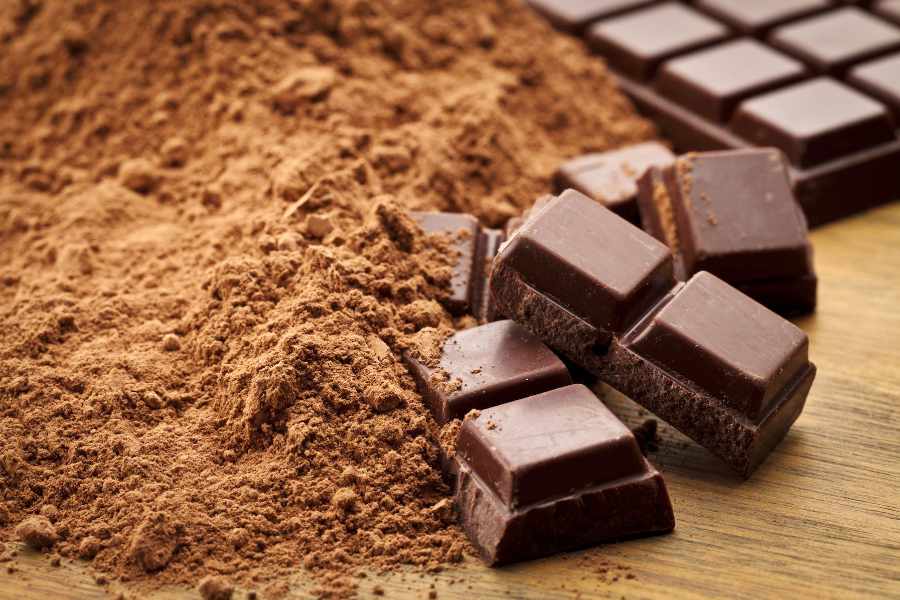
1. Cocoa powder
Most cocoa comes in the form of cocoa powder. Cocoa powder benefits are identical to the health benefits of cacao. However, raw cacao is superior because most of its beneficial plant-compounds are still intact. The reason as to why raw cacao’s beneficial plant-compounds are still intact has to do with the absence of heat in its production process.
2. Cocoa butter benefits
Cocoa butter is the fat present in fermented cacao beans. To extract the fat from the cacao beans they must be roasted, stripped of the hard outer shell, and pressed to squeeze out the butter.
Cocoa butter is often touted for its dermatological benefits. However, they provide various, and more reliable, health benefits when they are consumed.
a) Cocoa butter benefits when consumed
Cocoa butter is equal parts monounsaturated fats, specifically oleic acid, and saturated fats, specifically palmitic acid and stearic acid. Despite this, studies have shown that cocoa butter can reduce the risk of cardiovascular disease. In one study involving 470 healthy Dutchmen, researchers demonstrated cocoa butter’s ability to decrease the chance of developing heart diseases. Furthermore, the oleic acid, palmitic acid, and stearic acid that is present in cocoa butter have antioxidant and anti-inflammatory effects. These antioxidant and anti-inflammatory effects would in turn lead to a decrease in stroke risk, heart attack, and vascular issues.
b) Cocoa butter skin benefits
Research regarding the dermatological benefits of cocoa butter still lacks compelling evidence. Claims of the positive effects of cocoa butter on the skin are often anecdotal. Nevertheless, they are quite pleasant when they are rubbed on the skin. On top of this, they smell great. As long as you are not allergic to cocoa butter, it is worth a try.
Cacao Recipes
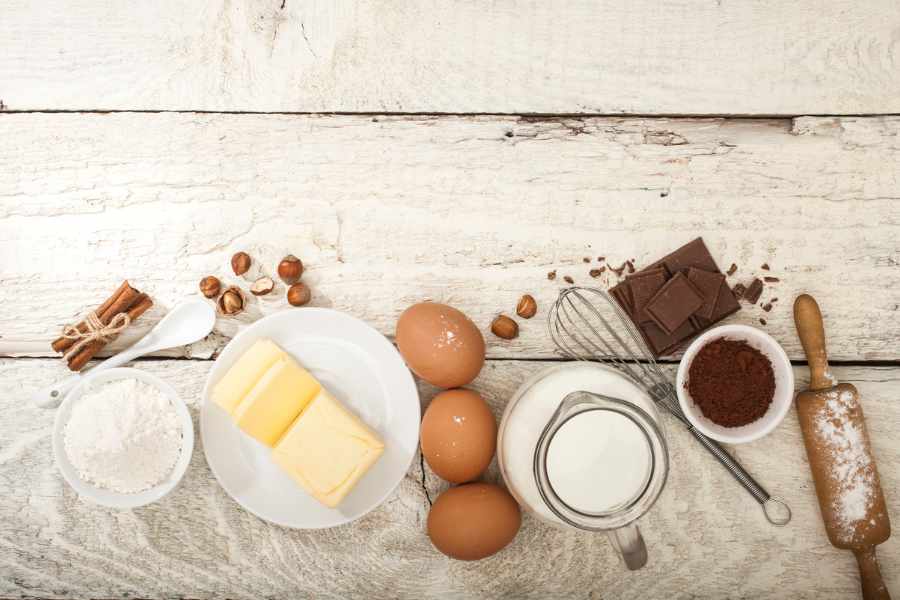
1. Vegan cacao powder recipe
This vegan cacao powder recipe utilizes raw cacao powder. This means that you’ll be able to consume a huge amount of cacao’s beneficial plant-compounds while staying true to being vegan. As an added bonus, this recipe is quite delicious and a perfect energy-boosting snack.
Ingredients
- 2 tablespoons of raw cacao powder
- 1 cup of nuts, it could be pure or a mixture of two or more, your choice.
- 1 cup of oats
- ¼ to ½ teaspoon of Himalayan salt, depending on your taste
- ¾ cup dates
- 1 to 2 tablespoons of water, you may use only 1 or 2 depending on the consistency of the
Instructions
- Using a food processor breakdown the nuts and combine it with the salt, oats, and cacao. Depending on your preference you may process it longer to get a finer texture but be careful not to over-process as you might end up making nut butter.
- Continue processing and add one tablespoon of water until the mixture turns thick and sticky. If the mixture is a bit too crumbly, you may add another tablespoon of water.
- Scoop out the thick mixture and form them into balls. Place these balls in a baking sheet with some parchment or wax paper so that they won’t stick.
- Refrigerate these balls for an hour. The balls may become hard enough after an hour that you may be able to transfer them into a different container. Once you do transfer them, continue refrigerating them for longer storage.
2. Brownie cacao nibs recipe
This brownie recipe is also vegan and most of its ingredients are whole foods. There are no added sweeteners and it is nut-free, which is great news for those of you who are allergic to nuts.
Ingredients
- ¼ cup of cacao nibs
- ¼ cup of chia seeds
- 8 Medjool dates
- 1 cup oats
- 2 average-sized bananas
- 1 average-sized avocado
- 2 tablespoons of Coconut oil
- ½ teaspoon of pure vanilla extract
- Cacao powder or any coating you could think of
Instructions
- Mash bananas and avocados together, or you may use a blender. Be careful not to over blend. Don’t forget to add the vanilla extract and coconut oil once you get a pretty smooth consistency.
- Continue mashing then add the other ingredients.
- Scoop out this dough-like mixture and shape them into balls. You may roll them over the cacao powder or any coating of your choice but this is optional.
- Chill them in the freezer
3. No-bake cheesecake cacao butter recipe
Ingredients
- Cake Base
- 150 grams of Digestive or sweet-meal biscuit
- 60 grams of butter melted
- Filling
- 380 grams of cream cheese250 grams of cashew nuts140 grams of dates48 grams of natural ground coffee beans1/2 cup filtered water2 tablespoon maple syrup
- Cacao powder for dusting
Instructions
- The cashew nuts need to be prepared ahead of time. Soak them in water for at least 4 hours. Once the soaking is done, spread them over a paper towel to dry. To remove all of the water, spread the cashew nuts over a baking sheet and dry them in an oven for 10 minutes at 420 degrees Fahrenheit.
- Brew the ground coffee beans using a coffee maker. Use the ½ cup of filtered water to brew the coffee. Take 1 tablespoon of this brew and transfer into a small container. Add all of the chopped dates and let it soak for 15 minutes. Remember to stir occasionally and squash the dates with the back of the spoon.
- Crush the Digestive or sweet-meal biscuit into fine crumbs.
- Mix the biscuit crumbs and melted butter thoroughly.
- Take a springform pan and line the bottom with parchment paper.
- Transfer the butter and biscuit crumb mixture into the parchment-lined springform pan. Gently but firmly press the mixture onto the pan to create a flat surface. Freeze this mixture for 30 minutes.
- About 20 minutes of freezing the mixture, start making your filling. In a blender, mix together the oven-dried cashew nuts, the brewed coffee and dates mixture, cream cheese, and two tablespoons of maple syrup. Puree until smooth but do not liquefy the mixture.
- At this point, the base should be hard enough. Pour in the filling and spread it evenly. Do some gentle taps on the pan to remove any air bubbles.
- Freeze the finished cheesecake for an hour then transfer to the refrigerator. Once you are ready to serve, carefully remove the ring from the pan and cover the cake with generous amounts of cacao powder.
Frequently Asked Questions About Cacao
Is cacao a superfood?
Cacao is in fact a superfood. As mentioned previously it contains flavonols, and other plant-compounds that provide a wide array of health benefits including, mood improvement, improvement in cognitive functioning, improvement of cardiovascular health, diabetes prevention, and more. On top of this, cacao is delicious and quite versatile.
Is cacao butter healthy?
Cacao butter contains a lot of oleic acid, this is a kind of monounsaturated fat. There are several health benefits associated with the consumption of oleic acid. Aside from that, cacao butter contains palmitic acid and stearic acids which are known to have antioxidant and anti-inflammatory effects.
How much cacao should I eat daily?
Dosage
When taken orally for the purpose of heart disease treatment, studies have shown that cacao or cocoa is best consumed at a dosage of 19 to 54 grams per day, 46 to 100 grams for chocolate, and 16 to 1000 milligrams for cacao polyphenols.
Overdose
Have caution with your cacao intake for you may be able to eat a lot due to its delicious taste. Consuming more than 54 grams of cacao can lead to sweating, trembling, and severe headaches. Eating raw cacao in excess is even more dangerous for it may cause theobromine poisoning which could lead to heart failure, kidney damage, seizures, and dehydration.
Conclusion
Cacao is a superfood that is quite similar to cocoa but has more beneficial plant-compounds. The reason why cacao has more plant-compounds has to do with the fact that its production process does not include the introduction of heat. The production of both cacao and cocoa is a tedious process that should be well appreciated by many. This superfood is very delicious and versatile and offers a lot of health benefits. So long as you are not allergic to cacao, this is a fine addition to your healthy diet.
